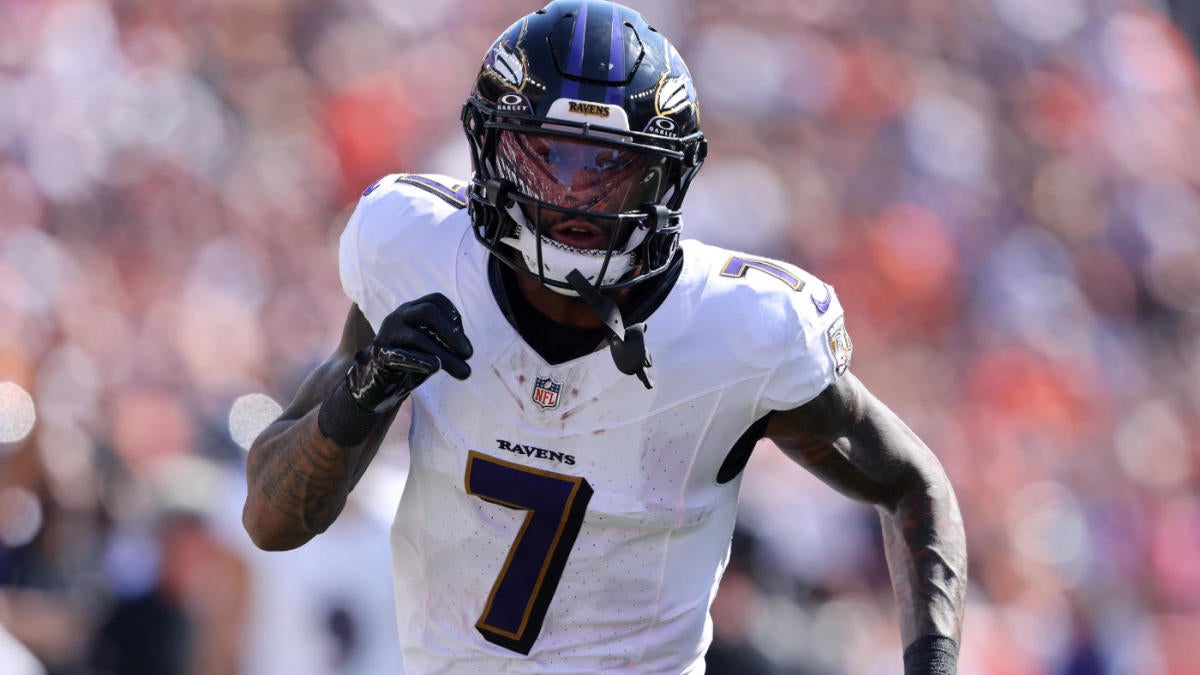Sports
The 17 Best Sports Documentaries of All Time

Wanting to even deeper into sports stories than TV broadcasts are able? The best sports documentaries have you covered, giving cinematic sweep and depth to athletes and their stories (both in the arena and out). Whether it’s football movies or movies about combat sports or sports movies for those who don’t like sports there’s some inherent alignment between athletic competition and film and TV storytelling. Documentary filmmakers have been able to look beyond the kineticism (or capture it even more dynamically) to present stories that look at the psychology and the struggles of athletes, and the cultural significance of their careers. Here are the 17 best sports documentaries ever made.
With editorial contributions from Brandon Latham.
Ken Burns’ “Baseball” (1994)

Ken Burns has a weird tendency to turn over his entire documentary to one particular talking head, whose on-camera presence is such that dominating the screentime just seems to be a given. There was Shelby Foote in “The Civil War,” Wynton Marsalis in “Jazz,” and Edna O’Brien in “Hemingway.” The most successful version of this happening is with Bob Costas in “Baseball,” however. The longtime NBC sports broadcaster brings almost poetic depth to this story of America’s Pastime from its origins around Cooperstown, New York in the 1830s to the triumphs of heroes like Babe Ruth and Hank Aaron of the 20th Century. It has been criticized, rightly, for overly focusing on just the Yankees and Red Sox (for that reason, “The Tenth Inning” addendum documentary from 2010 is especially worth avoiding) but, overall, “Baseball” is as important and in-depth a bit of American cultural history as Burns has ever delivered. —CB
“OJ: Made in America”

So much more than a sports documentary, “OJ: Made in America” is one of the great documentaries of the 21st century. Scratch that; it’s one of the great movies of the 21st century. Ezra Edelman’s mammoth five-part, seven hour look at the life of OJ Simpson is the apex of the “30 for 30” franchise, using the life and career of the notorious football star turned disgraced alleged murderer as a window into questions about race and celebrity in Los Angeles and America. The LA riots and the murder of Rodney King –– relegated to background noise by many OJ Simpson retellings –– takes central focus here, as Edelman considers the swirling anger and distrust of the police in LA’s Black populace as a central factor in the controversial acquittal of Simpson for the murder of his Nicole Brown and Ron Goldman. As far as sports stories go, “Made in America” is much more concerned with what happens off the football field, but it’s consideration of how America’s favorite pastime births larger-than-life celebrity is essential. ––WC
“The Last Dance” (2020)

A touchstone of Covid-19 lockdown viewing, “The Last Dance” is not without its flaws — Michael Jordan’s production company Jump 23 being a partner on the doc may well have resulted in an overly affectionate portrait of Jordan — but for sheer entertainment value it’s impossible to beat. Covering the Chicago Bulls dynasty of the 1990s that resulted in six NBA Championship titles, with a special emphasis on the sixth and final championship run in 1998 (“the last dance”), director Jason Hehir lets the personalities of the players pop: There’s Dennis Rodman and his exploits in Vegas with Carmen Elektra, Scottie Pippin literally being praised by Bill Clinton for his journey to NBA superstardom from Arkansas, and of course all the drama with Jordan that resulted in endless memes about the ways he settled scores (“And I took that personally”). If you’re someone who feels a shiver down your spine to this day whenever you hear “Sirius” by the Alan Parsons Project, this doc series is for you. —CB
“Red Army” (2014)

As much as people love to believe that sports are a pure form of spirited, friendly competition, as soon as athletics became an industry, it also became a political tool. Just look at all of the political controversies that have grown out of the Olympics as an example, and how the Cold War greatly affected the Soviet Union and America’s presence in the games. Gabe Polsky’s underrated “Red Army” takes a look at this link of sports and politics through the story of the Russian Five, a group of talented players from the Soviet National team who defected from the Soviet Union during the waning days of the Cold War to play in the USA’s National Hockey League. Through this story, Polsky considers how these men changed tactics in American hockey, and how their presence in the league broke barriers for European players to join American teams. It’s a smart, informative watch, one that has appeal for both hockey obsessives and those who have never hit a puck in their life. –– WC
“Bannister: Everest on the Track” (2014)
Equal parts a focus on the man, his triumph and his nation, “Bannister” is beloved by sports fans and history buffs alike as it places the great miler’s amazing feat — becoming the first man ever to run a mile under four minutes — into a post World War II cultural context. Funded on Kickstarter, this documentary arrived in time to celebrate the 60th anniversary of Bannister’s historic run at the Iffley Road Track. About half as many people have broken the hallowed four minute barrier since Bannister first did than have climbed to the summit of Mount Everest. Narrated by athletics commentator Jonathan Blackledge and directed by Jeremy Mosher, “Bannister” includes interviews from legendary athletes John Landy, Sebastian Coe and Steve Cram as well as writer David Epstein and of course Bannister himself. —BL
“Dogtown & Z-Boys” (2001)
Now fully embraced by the sporting world, there was a time when “extreme sports” were cast off as only the frivolity of west coast bums. That was until the Zephyr Surf Team, or Z-boys, extended surfing culture from oceans to swimming pools, and changed skateboard culture forever. Winning the Audience Award and top documentary director honors at Sundance, this Sean Penn narrated gem has had as profound an impact on skateboarding by re-popularizing it as its subjects had in bringing in to the mainstream decades ago. Stacy Peralta helmed this project, which expertly combines contemporary interviews with archival footage from the height of the Z-boys reign. —BL
“The Endless Summer” (1966)
This iconic, highly influential work of documentary filmmaking follows two surfers around the globe on a quest for the perfect wave. Less about sport, per se, than about these intriguing characters and the one-of-a-kind subculture they inhabit, “The Endless Summer” has become one of the most revered works of its time and its impact is still seen on surf culture as well as contemporary documentaries. It is the seminal surfing picture because of how well it presents a then fringe community. Often trivialized as a side detail to beach culture or teen films in narrative, documentaries have long done a better job of representing surfing, especially this landmark work by Bruce Brown. —BL
“Hoop Dreams” (1994)
“‘Hoop Dreams,’ is not only a documentary. It is also poetry and prose, muckraking and expose, journalism and polemic. It is one of the great moviegoing experiences of my lifetime.” So proclaimed Roger Ebert in his initial piece on the film, which he later called the best movie of the 1990s. Steve James’ masterpiece is the result of embedding himself and his crew for six years with two inner-city Chicago kids with big dreams of playing in the NBA. The boys, William Gates and Arthur Agee, are more than the cast of the film, they are its soul. The documentary is a portrait of the high pressure world of high-level amateur athletics, and of the struggle of adolescence in the lower class. This is the film whose snub from the Oscar Best Documentary race resulted in the Academy revising its nomination process, so let that speak for itself. —BL
“Larry Bird: A Basketball Legend” (1992)
“If you were to create the perfect basketball fable,” proposes this film, “it might begin in a small town in Indiana.” Released at a time when Michael Jordan was the most dominant and famous athlete in the world, and the basketball community was getting ready — whether it knew it or not — for the impending arrival of stars like Kobe Bryant and Allen Iverson to usher in the sport’s hip-hop era, “Larry Bird: A Basketball Legend” looks back at how a simple yet troubled rural American upbringing created one of the most celebrated champions in the history of the sport. —BL
“The Life and Times of Hank Greenberg” (1998)
The highly celebrated documentary by Aviva Kempner is truly about exactly what it advertizes: not only the historic first baseman himself, but the times that made him. Hank Greenberg was baseball’s first major Jewish star, once hitting 58 home runs in a single season, which was most ever at the time behind Babe Ruth’s 60. His stardom fell in the 1930s and ’40s, baseball’s most romanticized era, at which time America truly was universally in love with the game. It is a celebration of Greenberg and his career, but with a complimentary tip of the cap to baseball and to American life in general at the time. —BL
“Linsanity” (2013)
A Sundance hit, “Linsanity” and its production are a case in filmmaking serendipity. Evan Leong began filming with Jeremy Lin during Lin’s collegiate years at Harvard for a documentary on racism against Asian Americans, following the basketball star through his All-Ivy League season and his early struggles trying to break into the NBA. Then, on February 4th Lin scored 25 points in his first game with significant playing time, beginning an incredible streak that the sports media dubbed “Linsanity.” The name stuck. “Linsanity” is an immersive picture, that explores everything from Christianity in the Asian American community to surviving the NBA Development League. —BL
“9 Innings from Ground Zero” (2005)
From HBO, this emotional documentary displays one of the pivotal ways a grieving nation attempted to bounce back after 9/11. Grantland’s Bill Simmons wrote last year, “You always hear that tragedies put sports in perspective, that they prove we shouldn’t care this much about the successes and failures of a bunch of wealthy strangers. I’m going the other way — sometimes, sports put everything else in perspective. Our favorite teams bring people together, keep family members close, bond people from different generations.” “9 Innings from Ground Zero,” about the return of World Series baseball to Yankee Stadium only a month after New York’s darkest moment, is an opus on the healing power of sports. —BL
“Once in a Lifetime: The Extraordinary Story of the New York Cosmos” (2006)
Despite not being able to interview iconic soccer star Pelé, directors Paul Crowder (who also served as the editor of “Dogtown and Z-Boys”) and John Dower created a wildly entertaining portrait of the team that began the steadily ongoing surge of soccer in the United States. In 1975, Pelé returned from his retirement to join the Cosmos of the North American Soccer League after spending his most dynamic years in native Brazil, launching awareness and interest in the sport that made the Cosmos star figures in New York City. As the tag line reads, “Goals. Greed. Girls. And that’s just the first half.” —BL
“Senna” (2010)
A Sundance hit and BAFTA winner for Best Documentary and Editing, “Senna” makes a case that drivers are athletes, emphasizing the man behind the wheel and his unmatched ambition. A close look at the racing scene of Senna’s time reveals a degree of risk, pressure and stardom that has faded today, and that environment created excellent stars (see Ron Howard’s narrative film “Rush” for the story of two others). Directed by Asif Kapadia, “Senna” is an intimate and glorifying portrait of the three-time world champion through his tragic death at age 34. —BL
“Undefeated” (2012)
Similar in plot to “We Could Be King,” this chronicle of an unlikely group of winners from an inner city high school football team took home top documentary honors at the Academy Awards. The sort of story that would be lauded as too perfect, hard to believe if it were fiction, “Undefeated” is an inspirational journey with a coach and his athletes and a study in what high school football can mean to a Tennessee community. With a cast of characters headlined by coach Bill Courtney and closely paying mind to three of his players, “Undefeated” is the product of about 500 hours of footage trimmed down to an Oscar-worthy product. —BL
“Unforgivable Blackness: The Rise and Fall of Jack Johnson” (2004)
Ken Burns is a master of historical documentary. His 20-hour epic series “Baseball” may be the most important and accessible presentation of the history of the American game, but “Unforgivable Blackness” with its relative brevity and rich story is an equally triumphant tribute to the great boxer. This biography serves to present more than just Johnson the boxer, but also Johnson the symbol of a time when, according to the Emmy winning movie, “Black Americans were no longer enslaved, but not yet truly free… Jack Johnson insisted on being free.” Featuring the voice talents of Keith David and Samuel L. Jackson, the film displays Burns’s unique style and tells preserves an American icon. —BL
“When We Were Kings” (1996)
Another Best Documentary Oscar winner, “When We Were Kings” captures nostalgic recollections of some of boxing’s aging superstars who reigned at a time when the sport was at its popular peak. Focusing on the famed “Rumble in the Jungle” heavyweight title match between George Foreman and Muhammad Ali in Zaire in 1974, Leon Gast’s Oscar winner has been hailed as as effective a representation of its unique time and place as it is about the specific event. —BL










